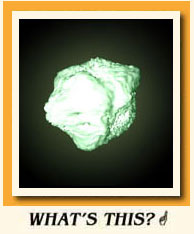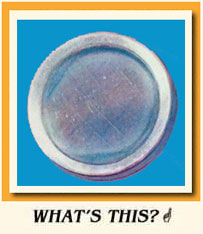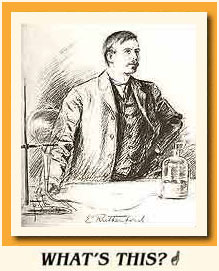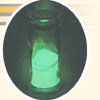| . |
III. The Mystery Answered
 cientists had a hard time telling whether a new substance was a new element or only a compound of elements that were already known. About the time Marie Curie was born, the Russian chemist Dmitri Mendeleev created a chart for organizing the elements. Over 60 elements were known by that time. Mendeleev classified the known elements according to the weight of their atoms. The atomic weight was found by comparing a known number of the element’s atoms to the same number of atoms of hydrogen, the lightest element. cientists had a hard time telling whether a new substance was a new element or only a compound of elements that were already known. About the time Marie Curie was born, the Russian chemist Dmitri Mendeleev created a chart for organizing the elements. Over 60 elements were known by that time. Mendeleev classified the known elements according to the weight of their atoms. The atomic weight was found by comparing a known number of the element’s atoms to the same number of atoms of hydrogen, the lightest element.
To prove that radium and polonium were elements, the Curies would have to show that their atomic weights were different from the weights of any of the known elements. It was a tough challenge. For these elements are found in minerals only in quantities so tiny that they are invisible. If they weren’t radioactive, nobody could have known they existed.
 
 t
took Marie Curie more than
three years to isolate one-tenth of a gram of pure radium chloride, a
speck almost too tiny to see. Only then could she find the new element’s
atomic weight. It took her another eight years to isolate pure radium.
She never succeeded in isolating polonium. It took a while for scientists
to understand why radioactive elements were so hard to work with. t
took Marie Curie more than
three years to isolate one-tenth of a gram of pure radium chloride, a
speck almost too tiny to see. Only then could she find the new element’s
atomic weight. It took her another eight years to isolate pure radium.
She never succeeded in isolating polonium. It took a while for scientists
to understand why radioactive elements were so hard to work with.
Building on Marie Curie’s research, scientists came to a clearer understanding of atoms. Atoms were not the smallest possible bits of matter, for there were particles within atoms. Atoms of different elements were different because they had different numbers of these subatomic particles inside them. Each atom also contained an amazingly large stock of energy. This was the source of the mysterious energy of radioactivity—it was a fundamental property of matter itself. (In 1905, Albert Einstein explained how matter and energy were really one and the same thing. See our Web exhibit on Einstein.)

 t
turned out that some
of the mysterious “rays” that radioactive
substances give off are actually tiny particles. When a radioactive atom
shoots out a particle, the atom may change into an atom of a different
element. For a uranium atom the result, after a series of steps, is a
radium atom. This atom too is not stable, and eventually it becomes a
polonium atom. The changes continue, ending up with an atom of lead, which
is a stable element, not radioactive. It all takes millions of years.
Scientists soon used radioactivity to measure
the age of the Earth. t
turned out that some
of the mysterious “rays” that radioactive
substances give off are actually tiny particles. When a radioactive atom
shoots out a particle, the atom may change into an atom of a different
element. For a uranium atom the result, after a series of steps, is a
radium atom. This atom too is not stable, and eventually it becomes a
polonium atom. The changes continue, ending up with an atom of lead, which
is a stable element, not radioactive. It all takes millions of years.
Scientists soon used radioactivity to measure
the age of the Earth.
Marie Curie could not get pure polonium because it decays very rapidly.
It takes only 138 days for half the atoms in the most stable form of polonium
to change. While Curie was carrying out her careful chemical analysis
of polonium, the polonium in her raw material was disappearing!

|
|








